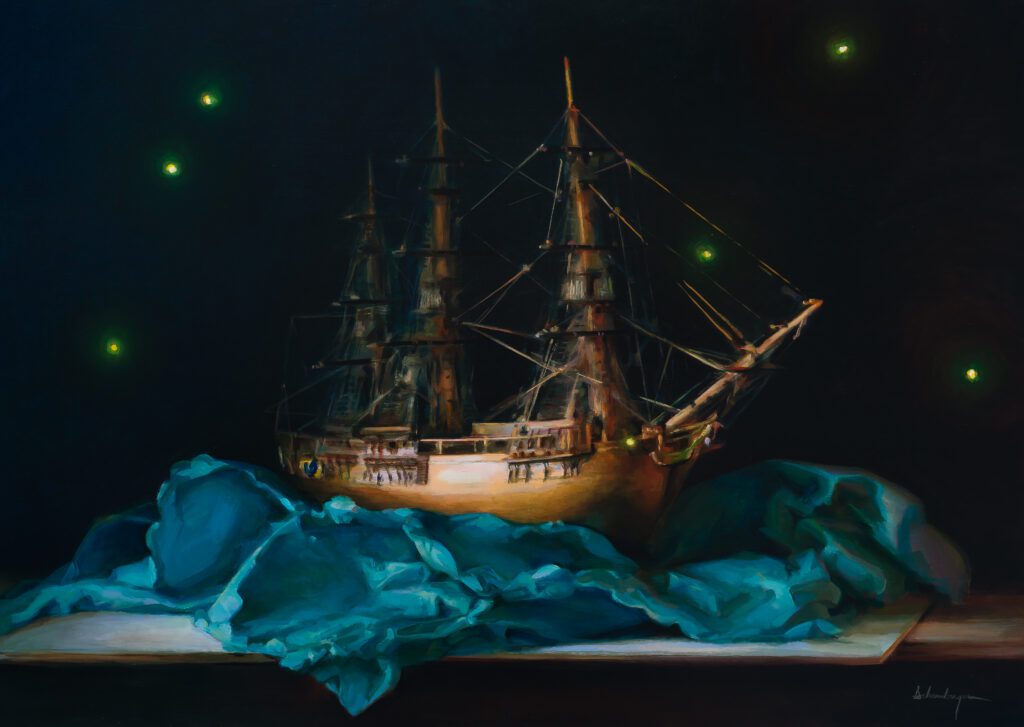Duluth artwork included in lunar time capsule
On Thursday, the whole world watched as Intuitive Machines’ Odysseus “Odie” spacecraft successfully landed on the moon. This was the first U.S. moon landing since 1972 and the first commercial spacecraft to ever land on the moon.
Aboard this historically significant spacecraft is the Lunar Codex, a time capsule collection of various types of art from all over the world. Founder Samuel Peralta came up with the idea for this project during the COVID-19 pandemic.
“I’m an art collector and a curator, and at that point in time, exhibits were closed down, art galleries were closed down, theaters, and lots of the folks that I knew basically were in a state of depression because they couldn’t perform culturally or anything like that. One of the exhibits that I curated was moved online, and because because it was moved online, I called it ‘Shelter’,” recalled Peralta. “At the same time as I was curating that exhibit, I learned about the Commercial Lunar Payload Services program, which no one had heard of at the time, but now everyone has heard of.”
Peralta decided to put “Shelter” on board through the program and did not stop there.
“When I did that, the act of doing so essentially gave me so much joy that I thought, I’ve got to share this with all the other artists,” said Peralta. “I’ve got to give them the kind of joy that I felt, and so I decided to put ‘Shelter’ on board. When I did that, I said, Well, why can’t I do that for more? And it just grew and grew and grew from there.”
The Lunar Codex collection includes work from 35,000 artists representing 233 countries, territories, and indigenous nations. One of the artists included is Duluthian Kelly Schamberger.
“It feels unbelievable. It’s really hard to wrap my head around,” said Schamberger. “I have known for a year and a half that my artwork was going to go to the moon, but I had not made the connection of like how historically significant this might be.”
Schamberger will have multiple pieces of her artwork featured in the Lunar Codex, through multiple space landings. The one currently on the moon, “Once Upon a Childhood”, is a personal piece that is meaningful to her family.
“My uncle had passed away at the beginning of the pandemic. This painting, it’s of a ship. My uncle had built this ship, and I remembered I had this memory from childhood of this, like, model ship up on a shelf in his house,” explained Schamberger. “So when he passed away, I kept the ship and decided to make a painting of it and set up a still life to kind of represent my childhood memories of him.”

Schamberger’s dad Bill Neher could not be more proud of his daughter’s accomplishment.
“This is the first time that I have ever seen this level of any art recognition,” said Neher. “For her art to go to the moon in commemoration of humanity, that’s never happened before. This is not only an incredible accomplishment, it’s a historic event.”
St. Paul native Joshua Cunningham is friends with Schamberger and found out through her that his art is one of the pieces featured in the Lunar Codex collection.
“I was thinking about the award and her excitement about it, and it’s such a wonderful reminder of how important our friends are and they can shine the light on things that you wouldn’t have otherwise seen for yourself,” said Cunningham.
Cunningham’s painting of a pasture, titled ‘So Begins the Green’, was also created during the pandemic.
“That was in the spring of 2020 when we were in the thick of uncertainty, and I just went out. My kids didn’t need to be in school because they were home. In fact, even my wife’s dental practice was closed down during that stretch and I just went out and painted,” said Cunningham. “I drove by that pasture many days of the early spring days. And then one day, the green shoots had started to come in. In the afternoon, the sun not only shone through them, but it kind of lights them all up. And so the greens, it was really like the first day of and a reminder that the world keeps spinning.”

Each piece in the Lunar Codex is a replication etched with archival technology, shrunk, and etched into a small nickel disc.
“If you put this under a microscope, that’s a thousand times magnification. You will actually see the pages and you can read the words,” explained Peralta. “So the artists will actually have their images miniaturized into something that can be seen with the simplest of optical tools.”
“I would encourage anybody who has an inkling, whether it’s creative or scientific or political or in media. I mean, all of these things come together to bring something like this about there’s so many aspects, so many hands, so many hearts, so many years of work that put anything on the moon, and it’s such a special crescendo of humanity that’s bigger than our two paintings.”
Joshua Cunningham
Due to the Artemis Accords, the time capsule will remain unopened.
“Protected and preserved as heritage of humanity was a term they use, which was also a crazy concept to try to take in and process what that meant. That my small piece of art was part of this collective shared history of humanity for ever and ever,” said Schamberger.